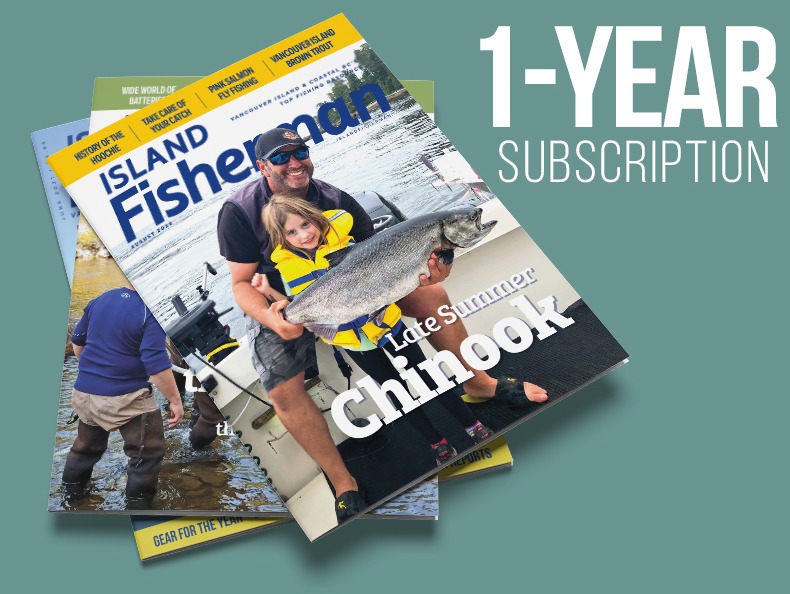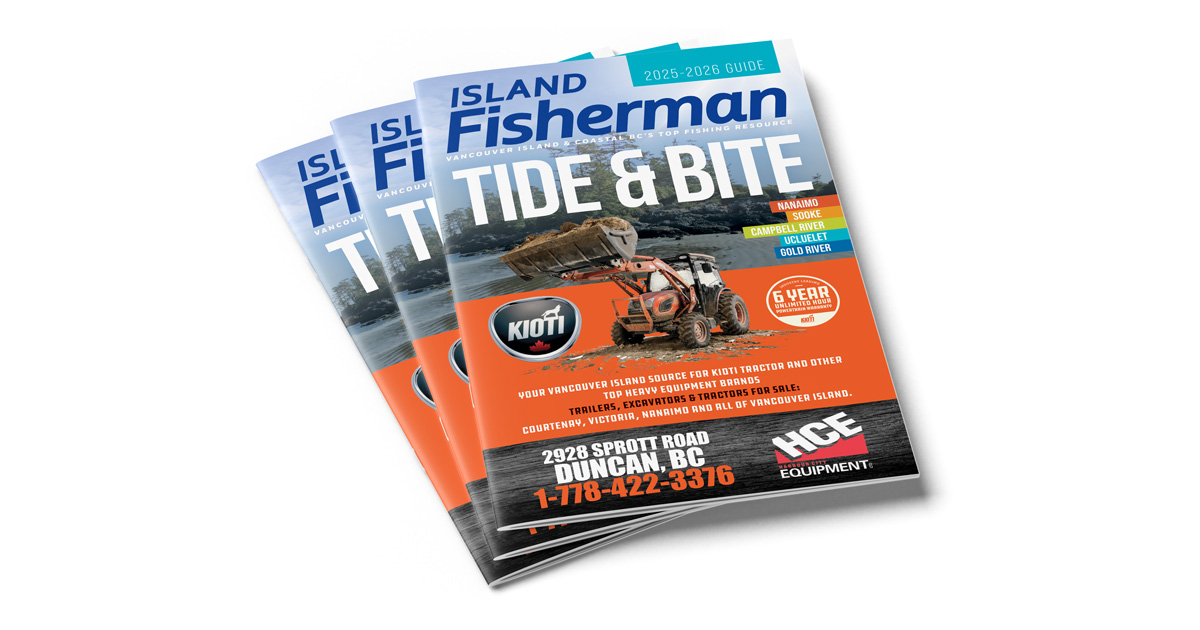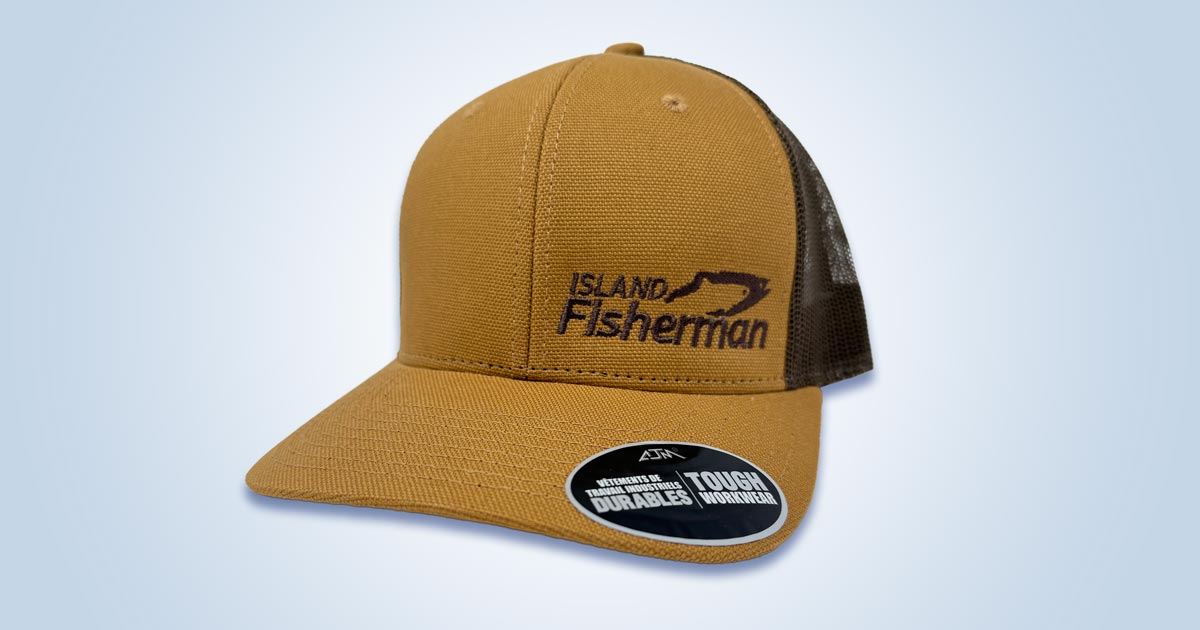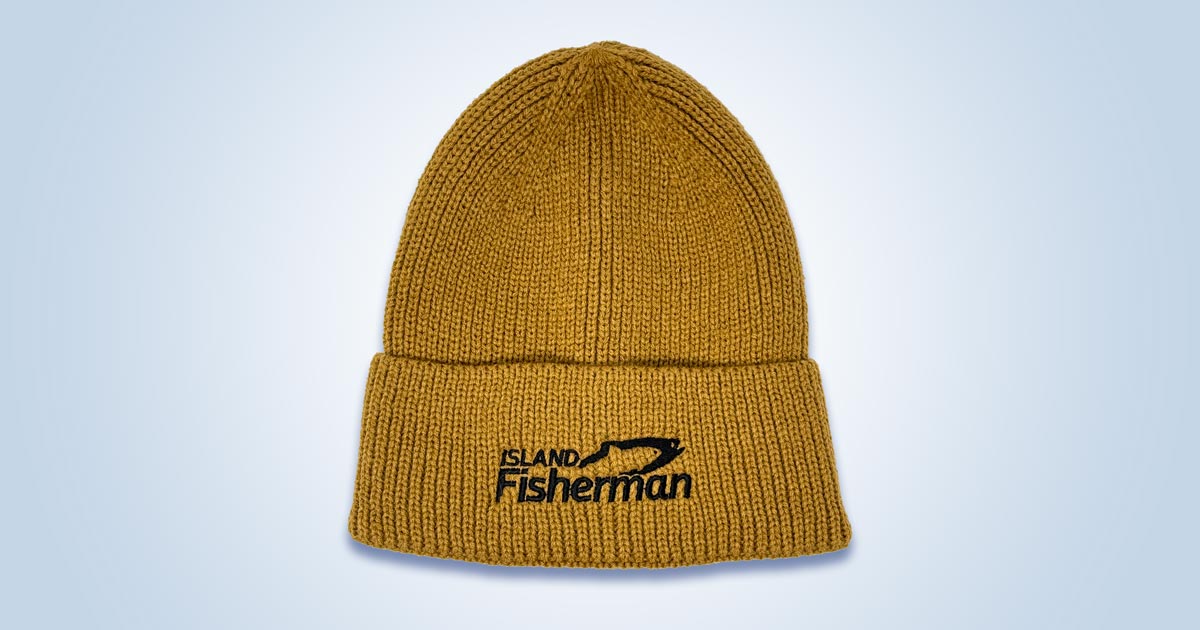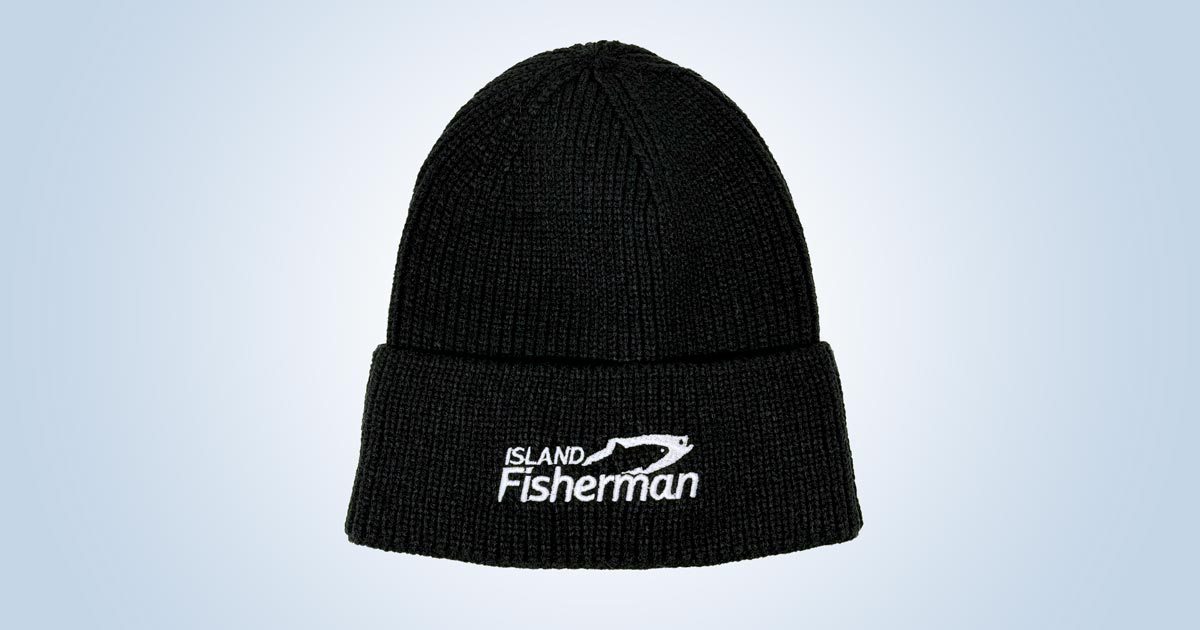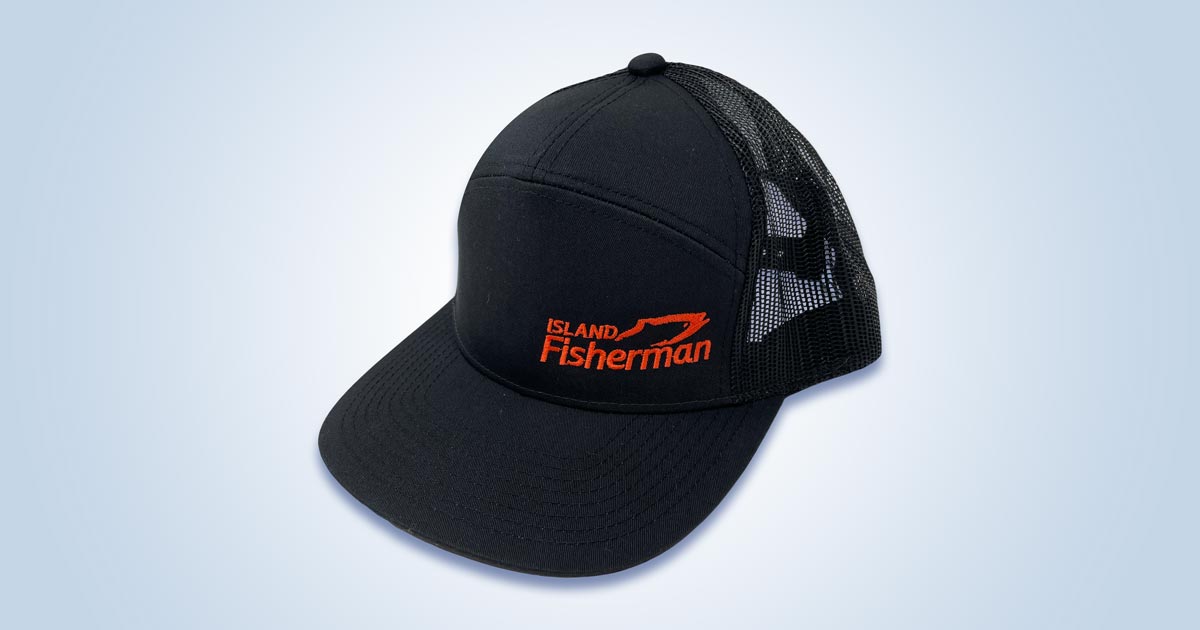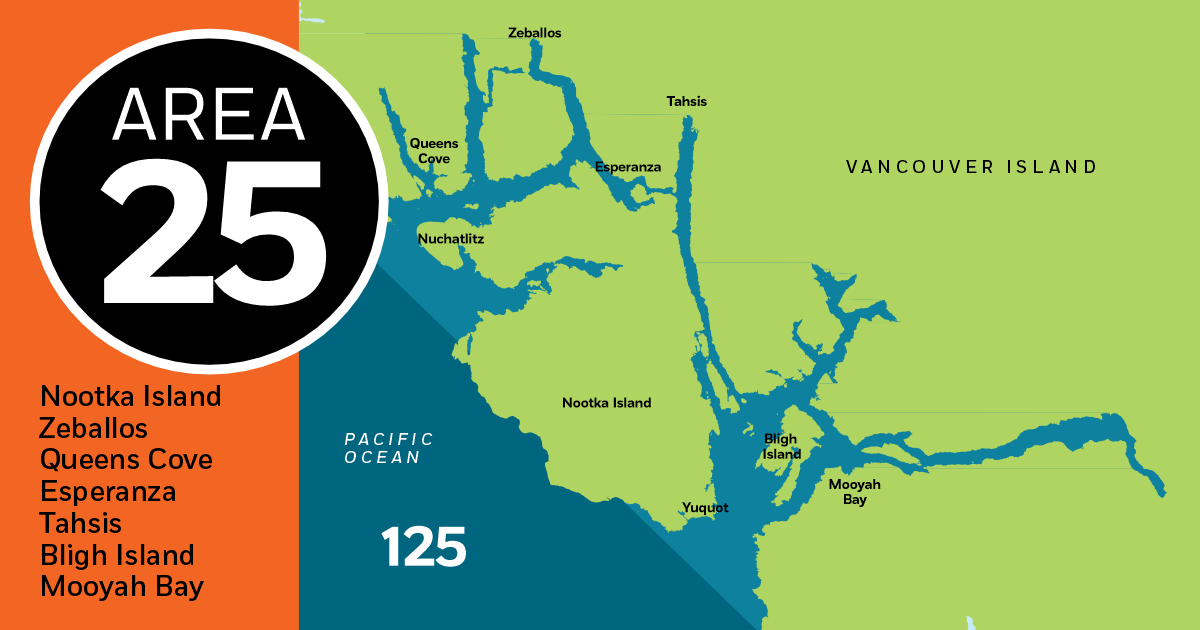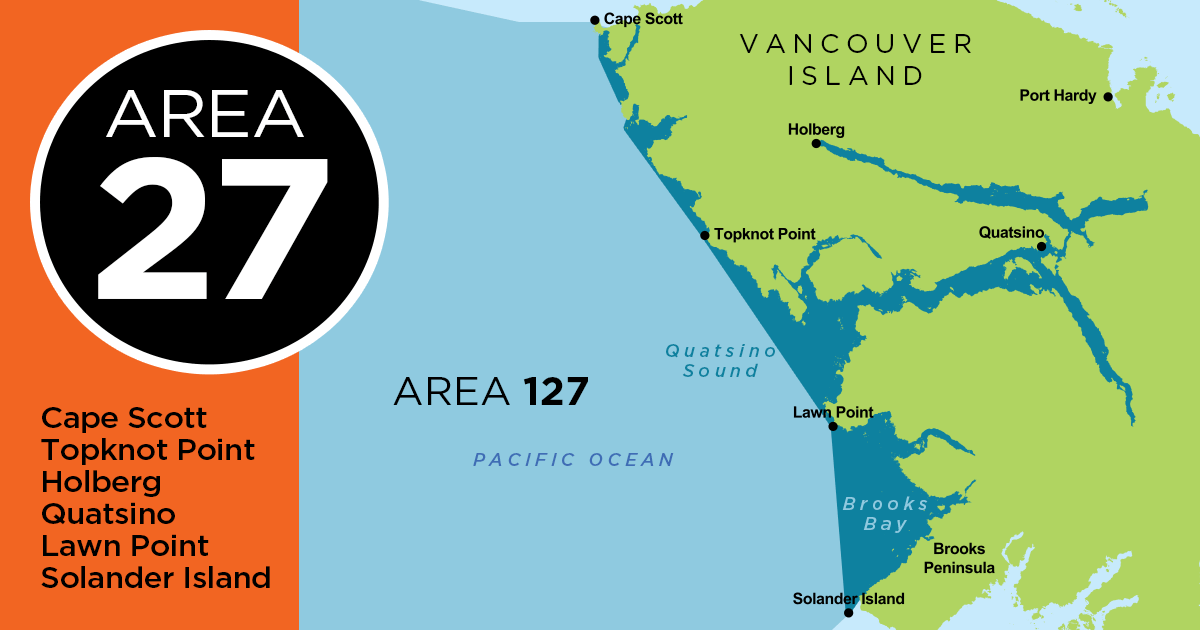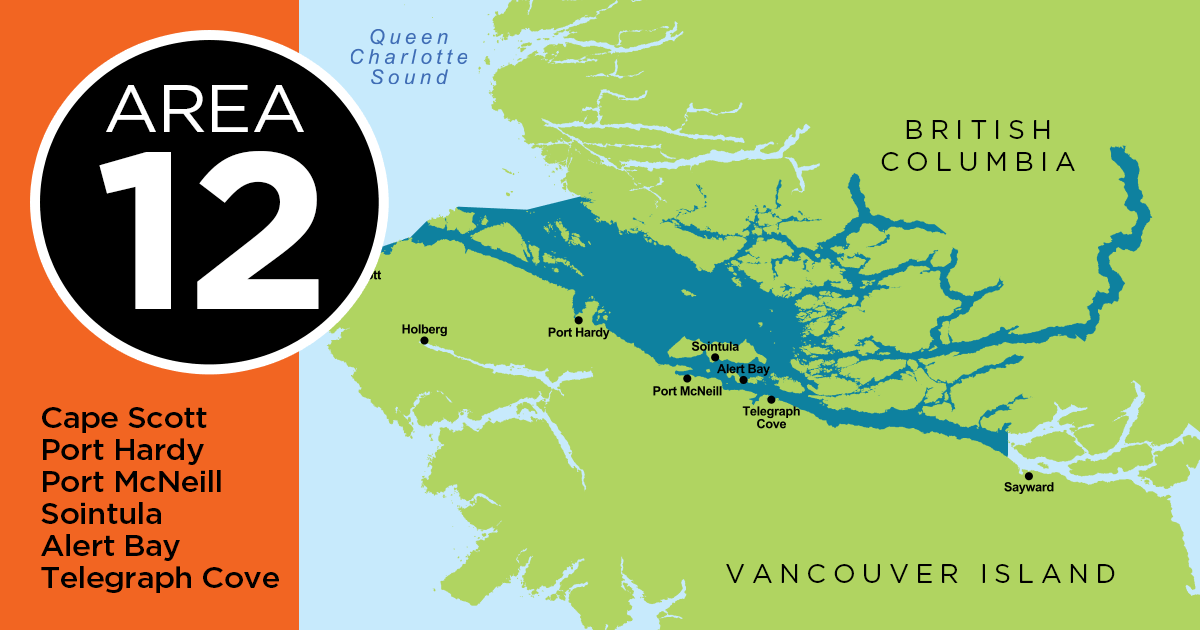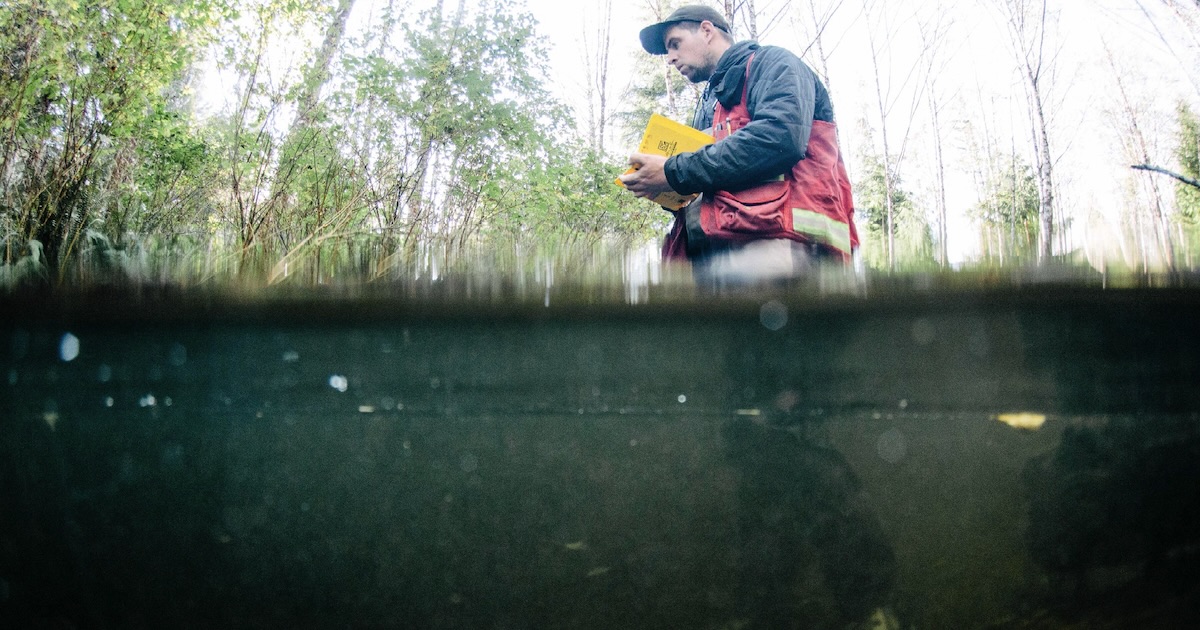
Photo: Redd Fish Restoration Society
Humans regularly impact salmon populations in significant and permanent ways, and not just by eating them. Physical alteration of the natural world is kind of our thing, and we’ve done much to their habitat over the years that has reduced access to their spawning grounds or degraded its quality. On Vancouver Island, a significant portion of the landscape has been indelibly marked by industry.
Historical logging and the associated roads have been a significant detriment to coastal species. By destabilizing slopes, roadbuilding has disturbed the frequency and magnitude of landslides, which can block fish passage or create sedimentation with negative effects on egg survival. Removal of trees and reducing the permeability of the ground also impacts the way rainfall is captured and directed in a watershed and can create more frequent scour events that cause more problems for young salmon. While not as damaging as some historical events like the Lake Missoula megafloods, which regularly decimated salmon populations on the Columbia Plateau every 30 to 70 years during the last glacial maximum, these persistent anthropogenic disruptions take a toll on already challenged stocks.
With the sobering reality of our impact on salmon clear to see, over the years many have organized to repair and replenish these ecosystems using whatever means available. Hatcheries have been commonplace in coastal areas for many years in BC and vary in size depending on the area and stocks enhanced. But what started as a boost to natural production in an attempt to increase the economic value of these fish, has turned into a genetic lifeline in many cases—where anthropologically extirpated runs are nursed along with the concerted effort of many. By continually monitoring and actively targeting runs of concern and ensuring they can be assisted using modern fish culture techniques, salmon enhancement efforts provide the ability to fast-track recovery where possible.
Replenishment of Biological Matter to the Watershed
When it comes to nature, there is only so much control humans can exert regardless of the effort or capital expended. While we are able to drastically change certain elements in the physical sense, the passage of time has always been an unchangeable constant. The process of remediating freshwater habitat for Pacific salmon is no different, and those involved have to manage their expectations when it comes to results, for there can be decades or even centuries between cause and effect.
One challenge to reestablishing runs is recreating the nutrient loads provided by the carcasses of returning adults, because when salmon populations dwindle, so do the invertebrates that form the base of the freshwater food chain and provide nourishment for juvenile salmon.
By facilitating the replenishment of biological matter to the watershed, hatchery-raised salmon (click here for what is a hatchery) implanted by knowledgeable crews can kickstart a process that is a positive feedback loop. Acting as a fertilizer anywhere they end up, these nitrogen-rich remnants fuel invertebrate and plant life at the bottom of the food chain, providing the necessary nutrients for the bugs the salmon fry eat as well as feeding the roots of the great trees that stabilize the banks of healthy systems against erosion.
These fish culture specialists are joined by teams of habitat restoration professionals who work to reshape the natural world we have disturbed in order to establish conditions that are more stable and favourable to salmon. One such group is the Redd Fish Restoration Society (https://reddfish.org) based in Ucluelet BC, founded in 1995 by a group representing the diverse makeup of coastal communities.
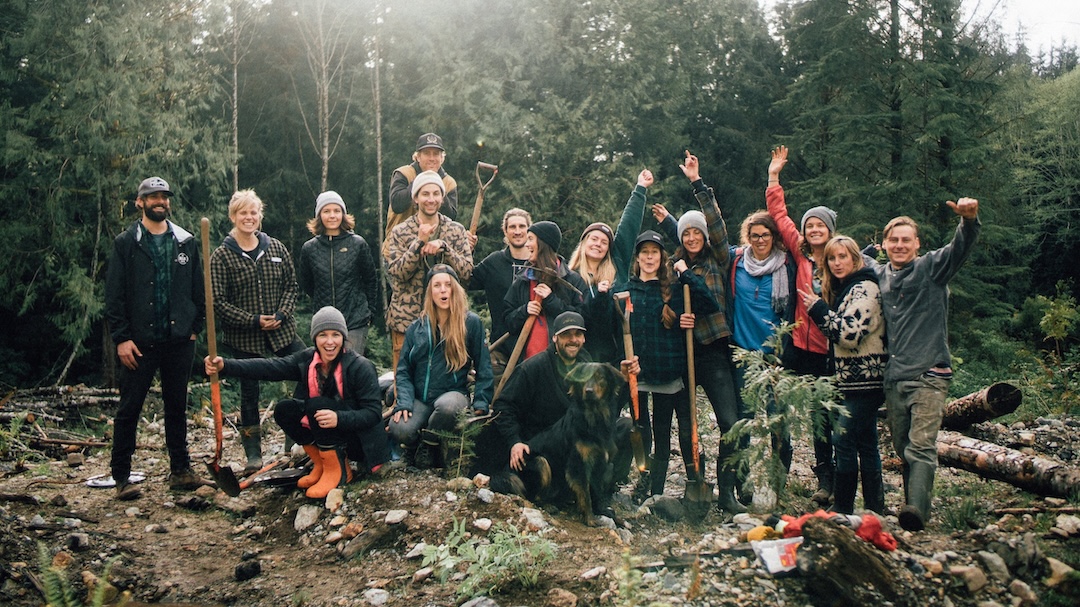
Redd Fish Restoration Society workers Photo: Redd Fish Restoration Society
Bringing loggers, forestry professionals, biologists, and local First Nations together to plan, fund, and facilitate restoration projects, they have expanded over the years to take on the challenge of addressing habitat loss. Providing monitoring and assessments as well as undertaking restoration efforts and more, the group actively engages with industry, government, and the local Nuu-chah-nulth nations to provide a comprehensive plan for the many potential activities required.
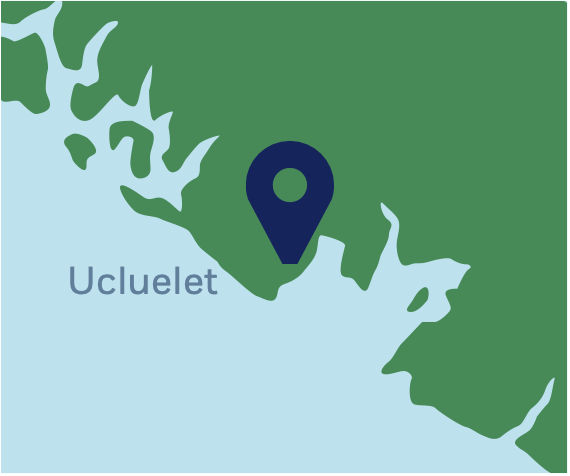
The Chenatha River Watershed
A shining success in the enhancement and restoration world is the Twin River, or Chenatha, watershed located in the traditional territory of the Toquaht Nation near Ucluelet, BC. After being significantly disrupted by the historical impacts of logging, this system had seen its natural runs of coho, chum, and pink salmon dwindle to zero in some areas. Road crossings, failed bridges, and the removal of mature riparian habitat via logging right to the water’s edge have all combined to remove things fish need—like large woody debris for shelter from predators—and add things they don’t—like sedimentation of spawning gravel and blocking passage upstream.
Starting in 2009, Redd Fish began the careful process of reimagining the damaged watershed. The plan, in their words, was simple:
“By accelerating the natural recovery of this watershed and restoring wild fish habitat, Redd Fish is aiming to increase the existing wild population of wild salmonids by increasing and improving viable freshwater in-stream habitat for rearing juveniles and spawning adults.”
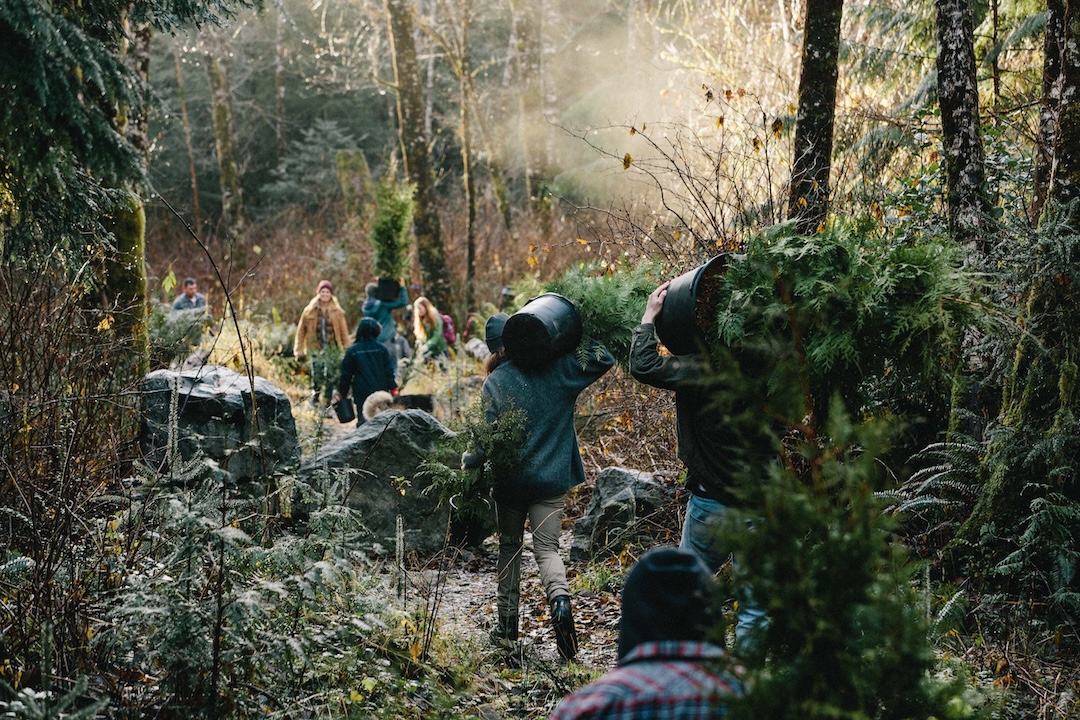
Restoration Photo: Redd Fish Restoration Society
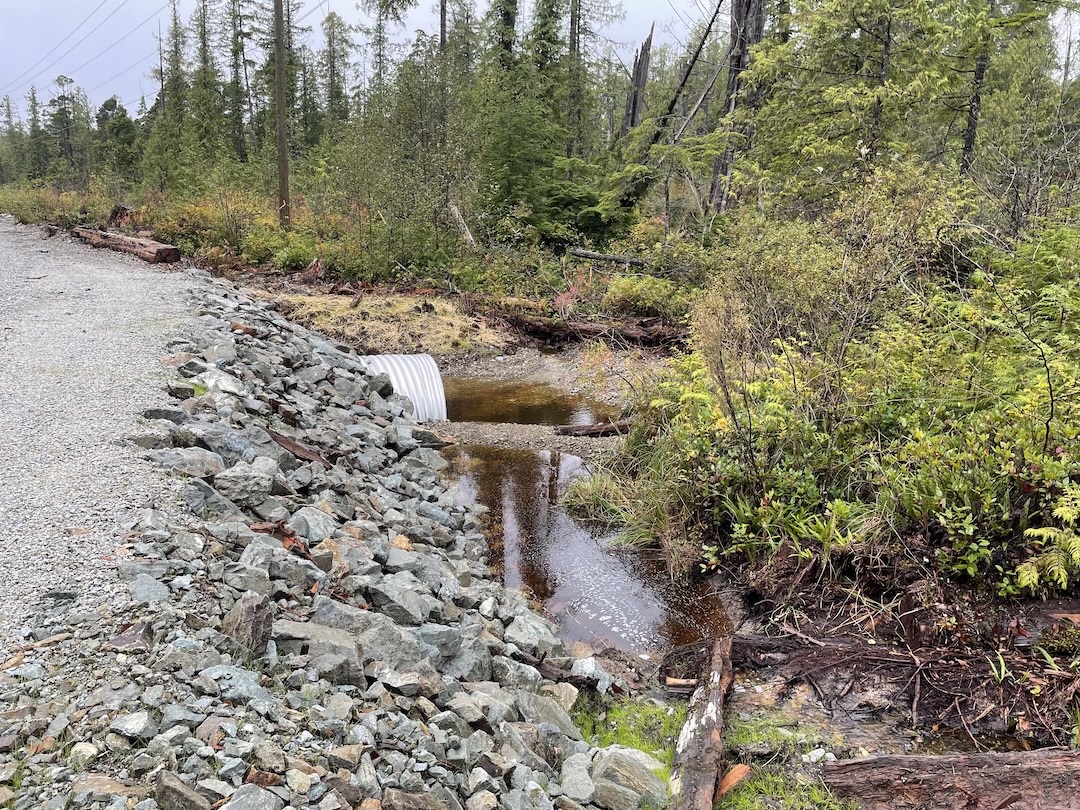
Culvert replacement Photo: Redd Fish Restoration Society
Human Nurture Helping Wild Nature
By clearing debris jams through 3.5km of stream and excavating a 120m side channel, they were able to address many of the fish passage, refuge, and nursery issues the system faced. Using semi-permanent structures built from large woody debris and rocks, they created potential pool and cover habitat which would react naturally to the weather events, moving as directed by the flows experienced.
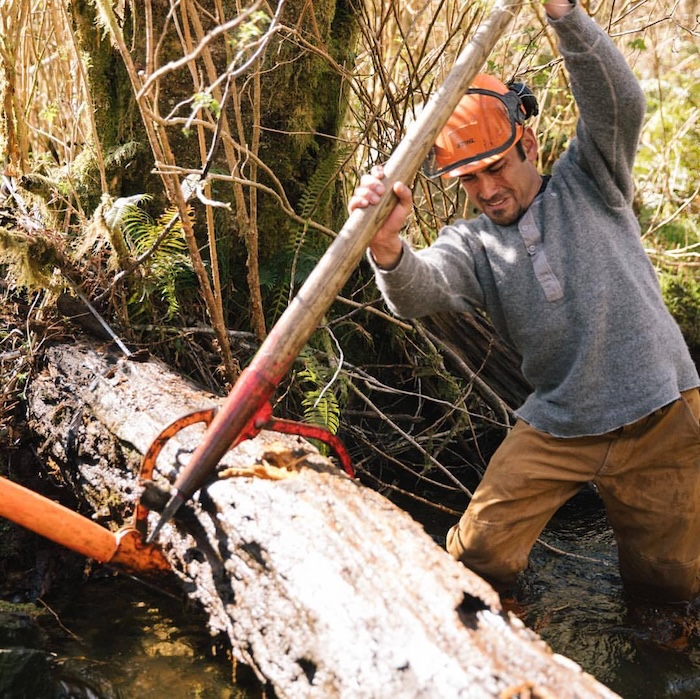
Macoah’s very own Carlos Mack volunteering to help rebuild habitat at Chenatha (Twin) River in Toquaht territory. Photo: Redd Fish Restoration Society
This focus on assisting, but not overriding, nature is a common theme in restoration, as the goal is to set the stage for those ancient genes to work their magic and let the salmon decide what’s best.
Once the physical landscape was rearranged to suit, there was still a problem: a lack of fish. On top of the obvious need to have spawners returning, the river system needed to have the biological input provided by their carcasses post-spawn. In order to give life a push, a plan was developed to introduce chum salmon fry from a close-by donor stock found in the Little Toquaht river.
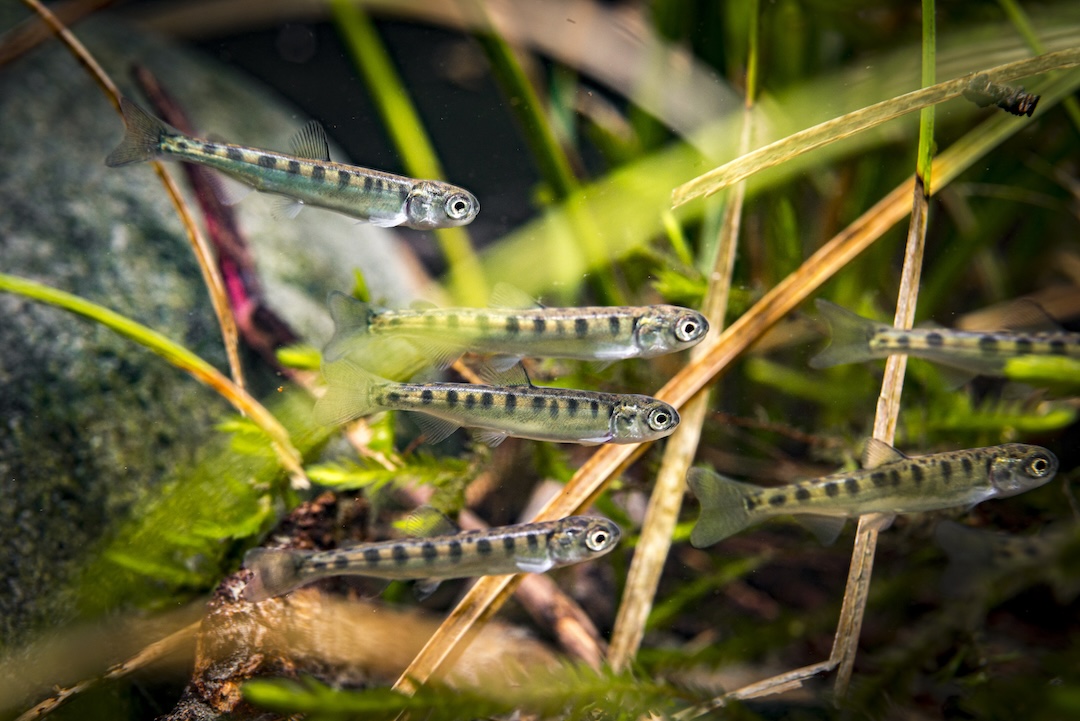
Chum Salmon fry, Oncorhynchus keta. Chum have unique par markings compared to the other species of salmon. The marks are mostly above the lateral line, as compared to coho and Chinook where they extend equally above and below. Photo: Eiko Jones Photography
In 2014 the Thornton Creek Enhancement Society (TCES)—with funding from DFO, visitor donations, as well as local groups like the Clayoquot Biosphere Trust—began collecting eggs and rearing fry to release in the Chenatha system. Between 80,000 and 120,000 chum fry have been released annually in multiple locations in the system, and numbers of returning adults have slowly climbed.
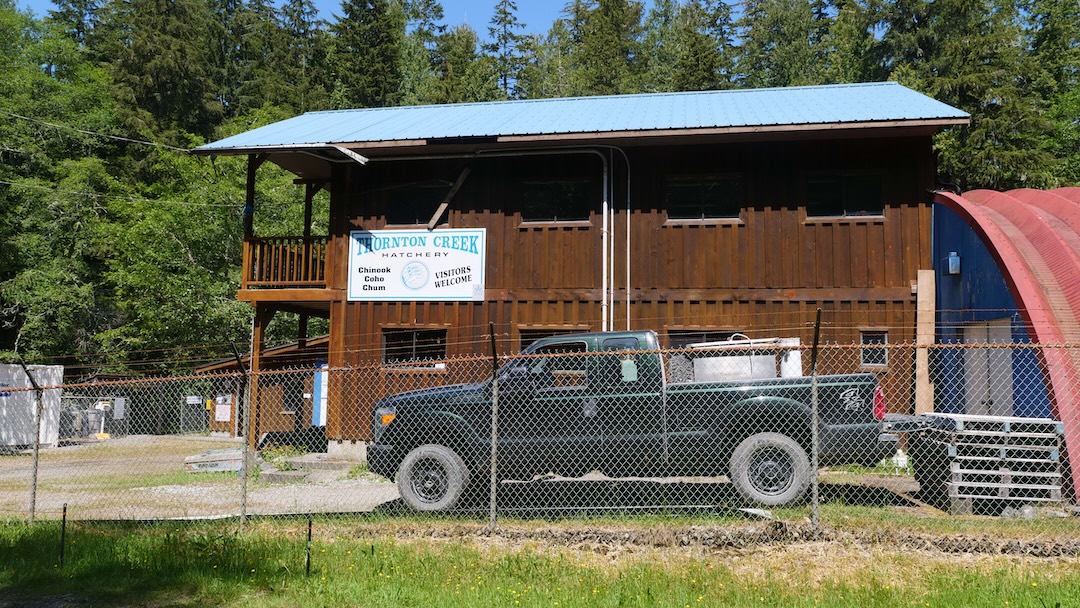
Thornton Creek Hatchery (Photo: Joel Unickow)
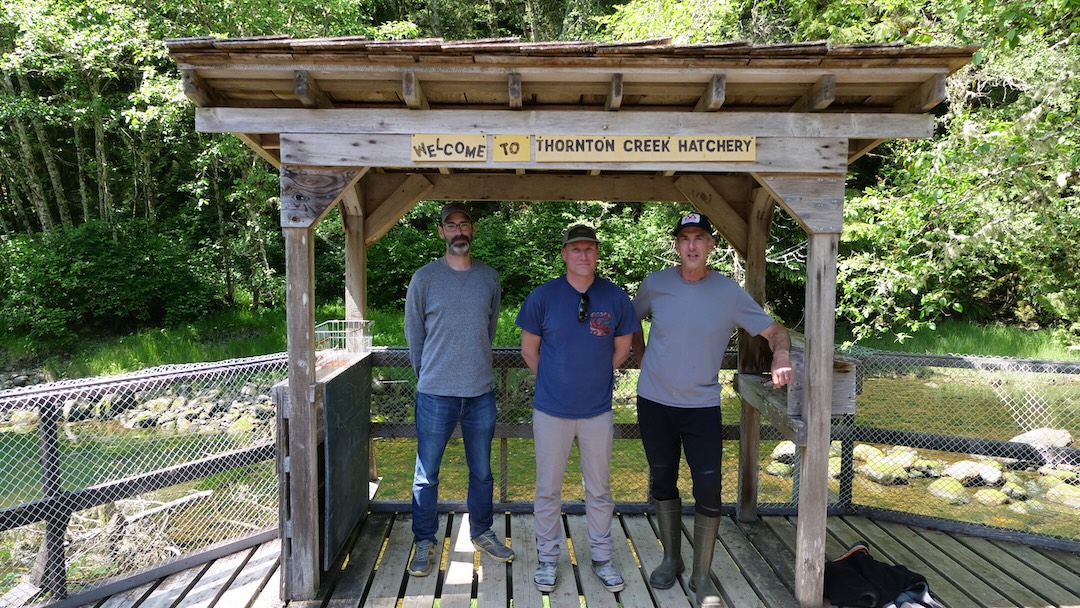
Robert Marshall James and Dave Hurwitz Photo: Joel Unickow
With results ranging from tens to hundreds of adult spawners returning over a number of years, the system slowly worked out its historical kinks. As the course of the water flow changed in reaction to the addition of structure, the pool/run/riffle ratio started to get back to a salmon-friendly one, and the newly added chum began to establish a foothold again. The rebound is a quick one in the salmon sense, being only a few generations into favourable conditions, but the numbers don’t lie. Initial counts put this year’s return above 1,000 chum, putting it at the low end of 1954 to 1975 average of 1,000 to 7,500 fish.
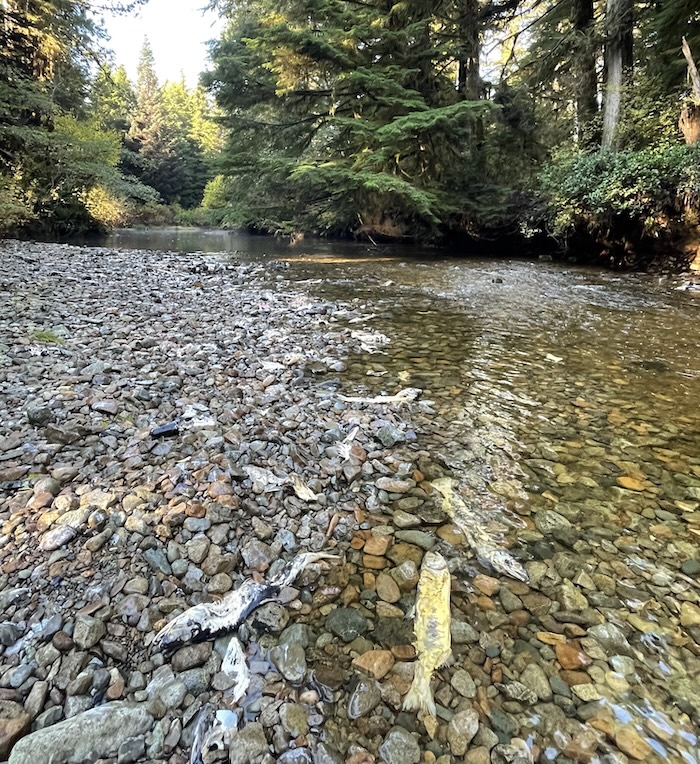
Little Toquaht spawned chum Photo: James Costello
The reintroduction of chum salmon to the Chenatha watershed will benefit all species in the surrounding ecosystem and goes to show that a combination of wild nature and human nurture can result in positive outcomes when it comes to salmon populations. By combining the efforts and abilities of the salmon themselves with strategic actions regarding habitat and stock enhancement, we can fast-track what naturally would take many generations of natural trial and error to complete. If the decline of wild salmon stocks can be referred to a “death by a thousand cuts,” every solution we can come up with will act as a Band-Aid as we scramble to triage assistance for this iconic family of fish.
This article appeared in Island Fisherman magazine. Never miss another issue—subscribe today!
Visit the Store
$34.99
$34.99
Featured Catch
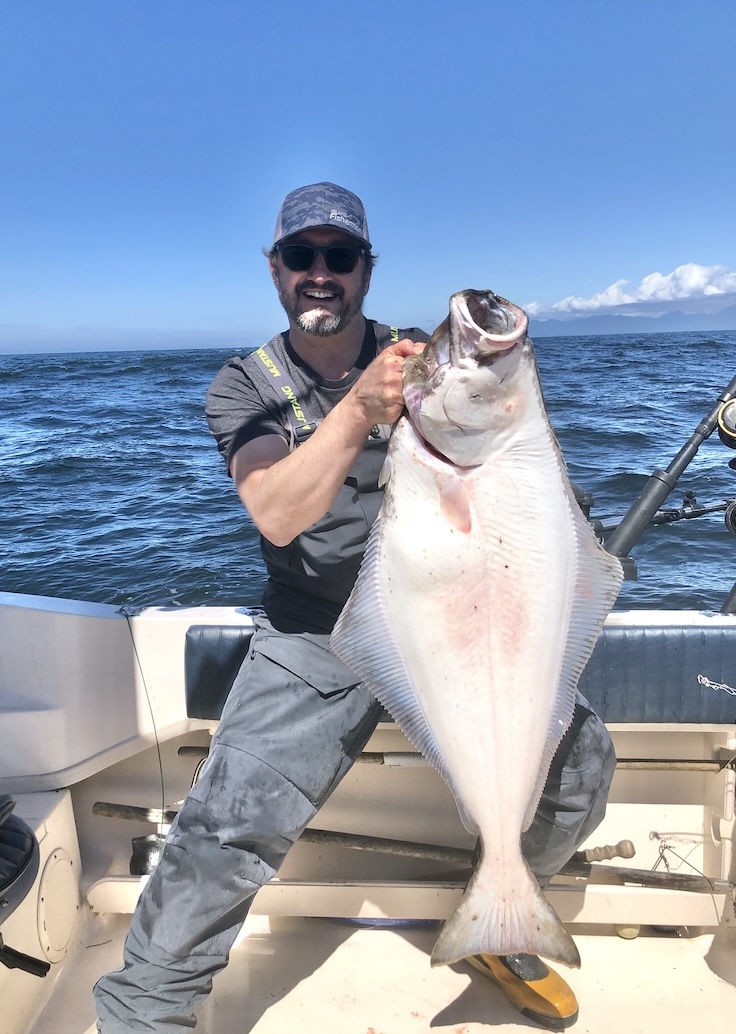
Joel Unickow halibut (Photo: Rob Frawley Lucky Strike Sportfishing Tofino)
